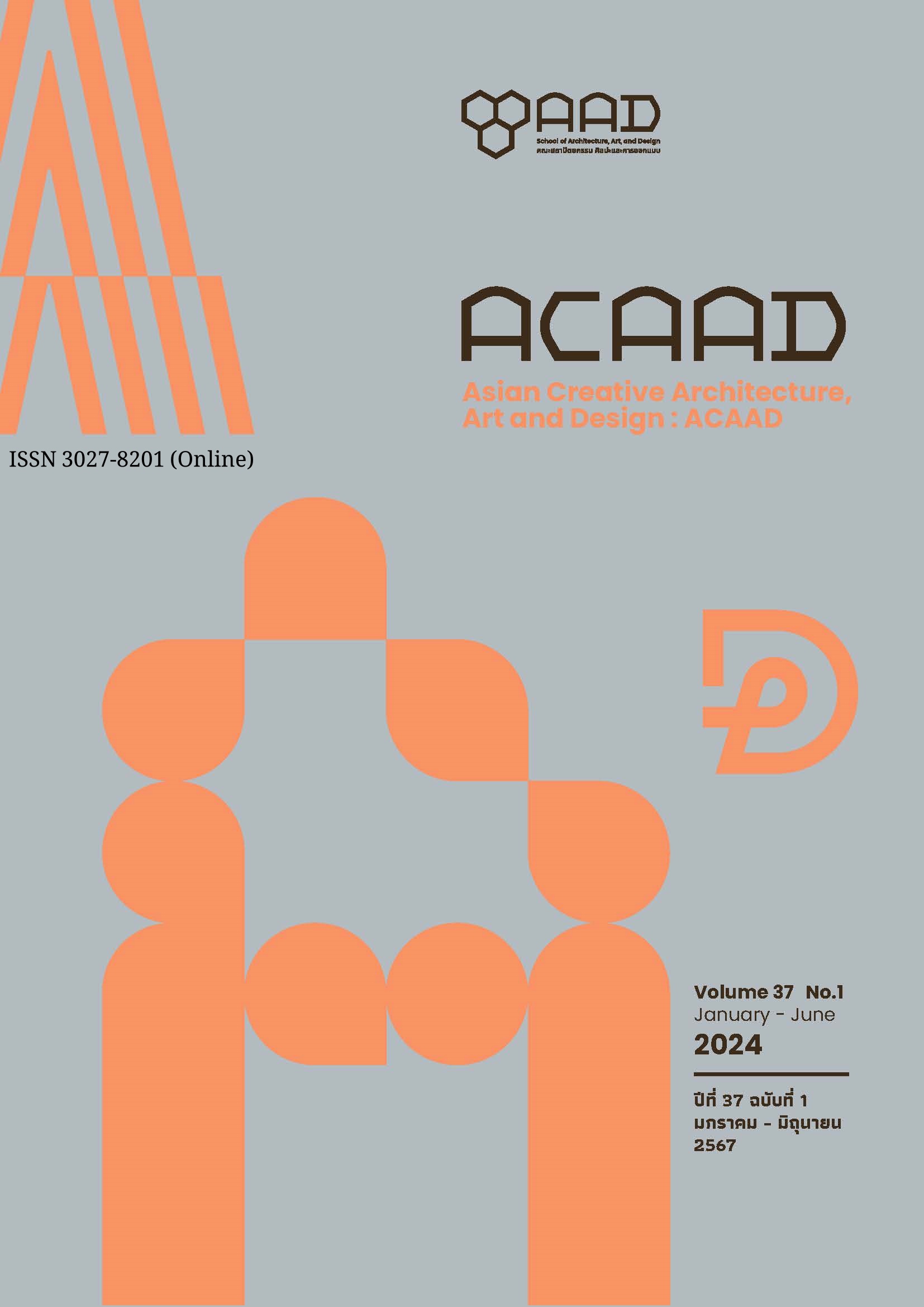A Situation and Temporal Behaviors of Air Pollution by ARIMA Model: A Case Study of Chiang Mai
Main Article Content
Abstract
The persistent issue of haze has become a paramount concern in various regions, impacting air quality, human health, and overall environmental well-being. This study focuses on the case of Chiang Mai, a city prone to recurrent haze times. This research reviews haze situation and its temporal behaviors to propose successive opportunities for effectively addressing the haze problem in Chiang Mai, encompassing both short-term mitigation measures and long-term sustainable strategies by applying haze data from 1996 to 2022 derived from Yupparaj school ground-based station recorded by Pollution Control Department (PCD) for analyzing the ARIMA statistics. According to the study's findings, the daily averages of PM10 and PM2.5 move greatly from January to April. There is a minor change in the daily average carbon monoxide (CO) between January and April. Although short-term projections in light of the area's pollution levels, it may be indicated that PM10, PM2.5, SO2, NO2, and O3 will likely increase, regarding the local pollution's changing behavior. When compared to other working days and weekends, it was discovered that the average CO values were significantly different at the 0.01 level, with Friday having the highest average CO emissions. Consideringly the timing, it was discovered that the CO2 levels were at their highest during rush hour, peaking in the evening and then the morning and noon periods, respectively. These characteristics indicate that measures taken to address this problem should concentrate on operating at a time that is relevant to the time the air pollution arises as well as the influences reducing and mitigating the level of air pollution greatest efficiency.
Article Details

This work is licensed under a Creative Commons Attribution-NonCommercial-NoDerivatives 4.0 International License.
This work is licensed under a Creative Commons Attribution-NonCommercial-ShareAlike 4.0 International License.
Copyright Transfer Statement
The copyright of this article is transferred to Journal of The Faculty of Architecture King Mongkut's Institute of Technology Ladkrabang with effect if and when the article is accepted for publication. The copyright transfer covers the exclusive right to reproduce and distribute the article, including reprints, translations, photographic reproductions, electronic form (offline, online) or any other reproductions of similar nature.
The author warrants that this contribution is original and that he/she has full power to make this grant. The author signs for and accepts responsibility for releasing this material on behalf of any and all co-authors.
References
Announcement of the Rattanakosin and Old City Preservation and Development Committee. (2010, December 13). The announcement of Chiang Mai old city area, B.E. 2553. https://law.onep.go.th/wp-content/uploads/2021/06/law10.4.pdf (in Thai)
Buathong, T. (2019, March 13). Dust: Chiang Mai, smog crisis in the northern region a national agenda that has not been resolved for 12 years. BBC News. https://www.bbc.com/thai/thailand-47550696 (in Thai)
Burrows, L. (2018, December 31). China’s war on particulate air pollution is causing more severe ozone pollution, PM 2.5 pollution is falling but ground-level ozone pollution is on the rise. Harvard John, A. Paulson, School of Engineering and Applied Sciences. https://www.seas.harvard.edu/news/2018/12/chinas-war-particulate-air-pollution-causing-more-severe-ozone-pollution
Bishop, S. (2023). The worst times for air quality: Understanding air pollution patterns and trends. Clarity. https://www.clarity.io/blog/worst-times-for-air-quality-understanding-air-pollution-patterns-and-trends
Cisse, K., Dieng, N.R., Gassama, A., Milusheva, S., & Ndiaye, A. (2023, 16 March). Innovative data collection for measuring air pollution in Dakar. World Bank. https://blogs.worldbank.org/opendata/innovative-data-collection-measuring-air-pollution-dakar
EPA. (N.D.). Criteria air pollutants. United States Environmental Protection Agency. https://www.epa.gov/criteria-air-pollutants
Jian, S. (2021). Forecasting COVID-19 pandemic in Alberta, Canada using modified ARIMA models. Computer methods and programs in Biomedicine update. 1, 100029. https://doi.org/10.1016/j.cmpbup.2021.100029
Kamton, R., Saienperakul, K., Yotapakdee, T., & Nunthasen, K. (2019). Haze-relate air pollution and impacts on healthy in Chiang Mai province. Thai Interdisciplinary and Sustainability Review. 8, 265-273. https://so03.tci-thaijo.org/index.php/JIRGS/article/view/243646/164949 (in Thai)
Kuerban, M., Waili, Y., Liu, F.F.Y., Qin, W., Dore, A.J., Peng, J., Xu, W., & Zhang, F. (2020). Spatio-temporal patterns of air pollution in China from 2015 to 2018 and implications for health risks. Environmental Pollution, 258, 113659. https://doi.org/10.1016/j.envpol.2019.113659
Mun, H., Li, M., & Jung, J. (2022). Spatial-temporal characteristics and influencing factors of particulate matter: Geodetector approach. Land, 11, 2336. https://doi.org/10.3390/land11122336
Pollution Control Department. (2022). Archived data. hourly mean PM2.5 from A.D. 2011 to 2022. Air4Thai. http://air4thai.pcd.go.th/webV3/#/History
Pollution Control Department. (2024). Archived data. hourly mean PM2.5 2024. Air4Thai. http://air4thai.pcd.go.th/webV3/#/History
Siamrath online. (2020, March 29). “Chiang Mai” dust levels reach the world’s worst air levels, 14 spots were in the dangerous red zones!. https://siamrath.co.th/n/142735 (in Thai)
Thai PBS. (2023, March 16). The whole world faces poor air quality, “Asia” ranks among the most severely polluted. https://www.thaipbs.or.th/news/content/325615 (in Thai)
UNEP. (2023). We are in this # Togetherforcleanair. UN Environment Programme. https://www.cleanairblueskies.org/
UNEP. (2023). Pollution action note – Data you need to know. UN Environment Programme. https://www.unep.org/interactives/air-pollution-note/
UNEP. (N.D.). Across the globe, nine out of every ten people are breathing unclear air. UN Environment Programme. https://www.unep.org/interactive/all-you-need-to-know-air-pollution/sw
Voice online. (2018, February 19). Water spraying truck–weapon to eliminate smog in Beijing. https://voicetv.co.th/read/rkjNLbuDG?fbclid=IwAR0s6QEy2OXQNyMyUjdB1YS0xqLo9lSjzbRUPEfzvMa5Cn-K43wvS6saOQc (in Thai)
Wang, J., Liu, D., Xu, X., Ma, J., & Han, L. (2022). Analysis of the temporal and spatial pattern of air pollution and the heterogeneity of its influencing factors in central Inner Mongolia from 2016 to 2018. Front. Environ. Sci. 10. https://doi.org/10.3389/fenvs.2022.893437
Zhou, X., Strezov, V., Jiang, Y., Kan, T., & Evans, T. (2022). Temporal and spatial variations of air pollution across China from 2015 to 2018. Journal of Environmental Sciences, 112, 161-169. https://doi.org/10.1016/j.jes.2021.04.025


